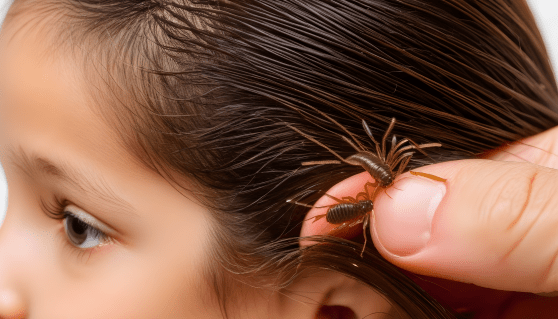Report: Penn State Center Yanic Konan Niederhauser Officially Staying in NBA Draft https://www.rawchili.com/nba/63115/ #Basketball #black #center #diaries #draft #FrontPage #in #konan #NBA #NBADraft #niederhauser #officially #Penn #report #shoe #state #staying #yanic
#staying
How lice helped to determine the exact date of the colonization of America
Table of Contents
Toggle
- Summary
- How Common Lice Helped to Determine the Exact Date of the Colonization of America
- The colonization of the Americas by Europeans is recorded in the DNA of lice.
- Lice takeover during European colonization
- FAQ
- 1. How can lice help determine the exact date of the colonization of America?
- 2. What role do lice play in understanding human migration?
- 3. How accurate is lice dating in determining historical events?
- 4. Can lice analysis be applied to other areas of historical research?
- Lice – Symptoms and causes – Mayo Clinic
- Lice in Humans Life
- Understanding the Link Between ED Drugs and Life Extension
Summary
By studying the genetics of head lice, researchers were able to determine the timing of the colonization of America. The study showed that Native American lice likely bred with European lice around 500 years ago, coinciding with European colonization. The genetic differences between head lice in Europe and the Americas provide insights into human interactions in the past, helping researchers understand how different groups of people met and interacted. However, the study's sample size was limited, and the researchers plan to include more lice in future studies to draw broader conclusions about global lice kinship.
How Common Lice Helped to Determine the Exact Date of the Colonization of America
European and American lice. When studying human history, scientists usually analyze bones and artifacts left behind by our ancestors. However, an unusual method of understanding human migration across continents involves studying the genetics of head lice. According to Mikkel Vinter Pedersen, a molecular paleoecologist at the University of Copenhagen, genetic differences between head lice in Europe and the Americas. Can give valuable insights into human interactions in the distant past. Which cannot be obtained through human DNA or archaeological evidence.
Lice colonization by Europeans in the past. The study of head lice, scientifically known as Pediculus human’s capitis, is a fascinating subject that sheds light on the historical and biological aspects of human interaction with these parasites. These tiny insects attach themselves to the hair and survive by feeding on the blood from the scalp. What’s interesting is that despite being a nuisance, head lice have coexisted with humans for millennia, relying on person-to-person transmission for their survival.
So, Marina Askance, a dedicated molecular biologist and PhD student at the University of Florida Genetics Laboratory, undertook a comprehensive research endeavor in collaboration with fellow researchers from various countries. Their collective effort led to the collection of 274 lice specimens from different regions around the world. Through meticulous analysis of the insects’ DNA, the research team successfully identified short repetitive segments known as microsatellites. In fact, these genetic markers provided crucial insights, allowing the scientists to categorize the parasites into closely related families inherited from a common ancestor.
The colonization of the Americas by Europeans is recorded in the DNA of lice.
This groundbreaking research not only contributes to our understanding of the genetic diversity and evolutionary history of head lice, but also highlights the collaborative nature of scientific inquiry transcending geographical boundaries. The findings of this study serve as a testament to the invaluable contribution of multidisciplinary research in unraveling the mysteries of the natural world.
So, one group of lice showed a genetic link between Asian and Central American lice. Suggesting that humans moved from East Asia to the Americas. However, another group connected American and European lice. The researchers estimated that Native American lice probably bred with European lice about 500 years ago. Around the time of European colonization. This estimate is based on how quickly lice reproduce and develop genetic mutations.
Then Alejandra Perotti, an invertebrate zoologist at the University of Reading specializing in lice, suggested that the study’s sample size should be expanded and diversified because the researchers had limited lice samples from Africa and South America, preventing them from drawing broader conclusions about global lice kinship. Azcunce plans to include more lice in future studies to address this limitation.
Pedersen says lice can show if different groups of people met, even if they didn’t have babies together. This helps us understand how people from different places interacted in the past.
Lice takeover during European colonization
FAQ
1. How can lice help determine the exact date of the colonization of America?
Because lice have a strong host-specific relationship, meaning they adapt and evolve alongside their human hosts. By analyzing the genetic variations in lice, populations found in archaeological remains, researchers can trace the migration patterns of early settlers and determine the specific time period of European colonization of lice based on the genetic differences observed.
2. What role do lice play in understanding human migration?
Since lice serve as biological markers of human migration, as they require direct contact with human hosts to survive. By studying the presence and distribution of lice in different regions and populations over time, researchers can map out the routes taken by ancient humans, uncovering the intricate web of migration and settlement patterns that shaped the colonization of America.
3. How accurate is lice dating in determining historical events?
While lice dating techniques have proven to be a useful tool in historical research. It is important to consider them in conjunction with other archaeological and genetic methods. Lice analysis provides valuable insights into population movements. But it is necessary to corroborate the findings with historical records and archaeological context to ensure accurate dating and interpretation.
4. Can lice analysis be applied to other areas of historical research?
Absolutely! Because understanding human migration through lice analysis offers new research opportunities in different historical periods. By studying lice, we can track ancient civilizations’ movements, examine trade and cultural patterns. And learn about the origins and spread of populations worldwide. So, combining lice analysis with other scientific fields can greatly enhance our understanding of human history, going beyond just the European colonization of lice to America.
Lice – Symptoms and causes – Mayo Clinic
Understanding the Link Between ED Drugs and Life Extension
#acrossContinents #ancientCivilizations #archaeologicalEvidence #blood #collaboration #colonization #crucialInsight #culturalPatterns #EuropeanAndAmericanLice #examineTrades #families #geneticMutations #genetics #geographicalBoundaries #headLiceInEurope #help #historicalResearch #history #humanDNA #humans #humansHistory #insects #Lice #life #migration #multidisciplinaryResearch #opportunities #parasites #People #plan #regions #researchers #scalp #settlementPatterns #staying #TourettesSyndromeUncontrollableMovementsAndSounds #transmission #Understanding #UniversityOfFloridaGeneticsLaboratory #unusualMethods #variousCountries #World
#funny #computer #animation #Staying Alive song
Stepping out.
This little microchip is a
"short circuit", eh!🤏 (NE555)
😉😀...
Moves like Jagger,
Or maybe Travolta!
😉😀😉
https://www.youtube.com/watch?v=mDhNQPt8An0😀
On the #Upside; my #RomanCatholicMother did get to meet #CameronDiaz when she and #TeenyTinyTomCruise were #Filming for #KnightAndDay in #Sevilla...
They were #Staying at the #AlfonsoXIII, #Hotel; #IT was #VeryNice...
#IT's #StillVeryNice... | #TrueFacts
🧙🏩🤖🐺🤖🏩🧙 | ☕️🦹:fediverse:🦄:fediverse:🦹☕
Here at The Jane Doe Soap Company our goal is to help you in your journey towards becoming a better person for yourself and for the world at large. We created some tips that we think will be beneficial to you as you continue on your journey. #staying hydrated #water #wellbeing
#Admiral #Jeremiah #Denton #Blinks #MorseCode #Warning as #pow
https://www.youtube.com/watch?v=rufnWLVQcKg
this is so #smart #imagine #staying in #front of an as*hole and blink via #morsecode as*hole 🤣 🤣 🤣
@candle seems like #fewer and fewer of us are #staying constipated. #backedUpGang
@ShekinahCanCook
Ah yes. Some do very much dream about chasing us all out. Good luck to them. They are a tiny fragment of the populace which, if we keep reminding our neighbors how much of our lives they’re wasting by failing to focus on wages, #housing health and the cost of elder care, child care—maybe average people will disengage from the extremism and racism and remember #lgbtq people and their neighbors have never just been white & that being cruel gets the world nowhere but messed up. #notleaving #staying in #idaho to make the place more loving, safe, just and free for ALL of us—not just the pale cruel few. Hope you all join us & work to end this senseless violence, censorship & demonizing & get our state leaders to work on real issues.
@SpockResists the transition from combat boots to boat shoes has been good. #staying
@SpockResists I’ve been here about 2 weeks. People are without doubt the most friendly, collegiate, and helpful bunch I’ve encountered on the interwebs. On the birdsite I was a nervous wreck every time I engaged in case I inadvertently stirred up a trolls’ nest. #staying #mastodon
@SpockResists I’m staying. I’m enjoying it here. So far so good. #friendship #staying
just got 1 big question: how do you handle big unexpected costs in such situations? do you have some sort of insurance?
suppose a guest forgets a candle and everything catches on fire, for instance.
20-9-8 → #distracting
12-17-13 → #chastened
16-12-13 → #directs
7-9-11 → #blackmailed
7-12-13 → #longer
15-4-15 → #staying
distracting-chastened-directs-blackmailed-longer-staying
Roll your own @ https://www.eff.org/deeplinks/2018/08/dragon-con-diceware
6-2-1 → #paid
15-4-15 → #staying
7-4-12 → #postcard
12-14-15 → #ending
2-12-14 → #eavesdrops
5-9-18 → #arriving
paid-staying-postcard-ending-eavesdrops-arriving
Roll your own @ https://www.eff.org/deeplinks/2018/08/dragon-con-diceware
1-1-19 → #captain
7-5-6 → #stationary
16-20-15 → #summer
15-4-15 → #staying
3-7-3 → #mistake
5-8-12 → #felicis
captain-stationary-summer-staying-mistake-felicis
Roll your own @ https://www.eff.org/deeplinks/2018/08/dragon-con-diceware
we out here #staying #hydrated #WaterDrinkers
12-20-13 → #discovery
4-10-2 → #chair
14-12-14 → #did
15-4-15 → #staying
19-8-5 → #vulnerable
10-6-19 → #gamekeeper
discovery-chair-did-staying-vulnerable-gamekeeper
Roll your own @ https://www.eff.org/deeplinks/2018/08/dragon-con-diceware
11-11-11 → #wary
20-19-11 → #library
7-3-2 → #boomslang
15-4-15 → #staying
12-14-2 → #pointy
4-8-10 → #daily
wary-library-boomslang-staying-pointy-daily
Roll your own @ https://www.eff.org/deeplinks/2018/08/dragon-con-diceware


